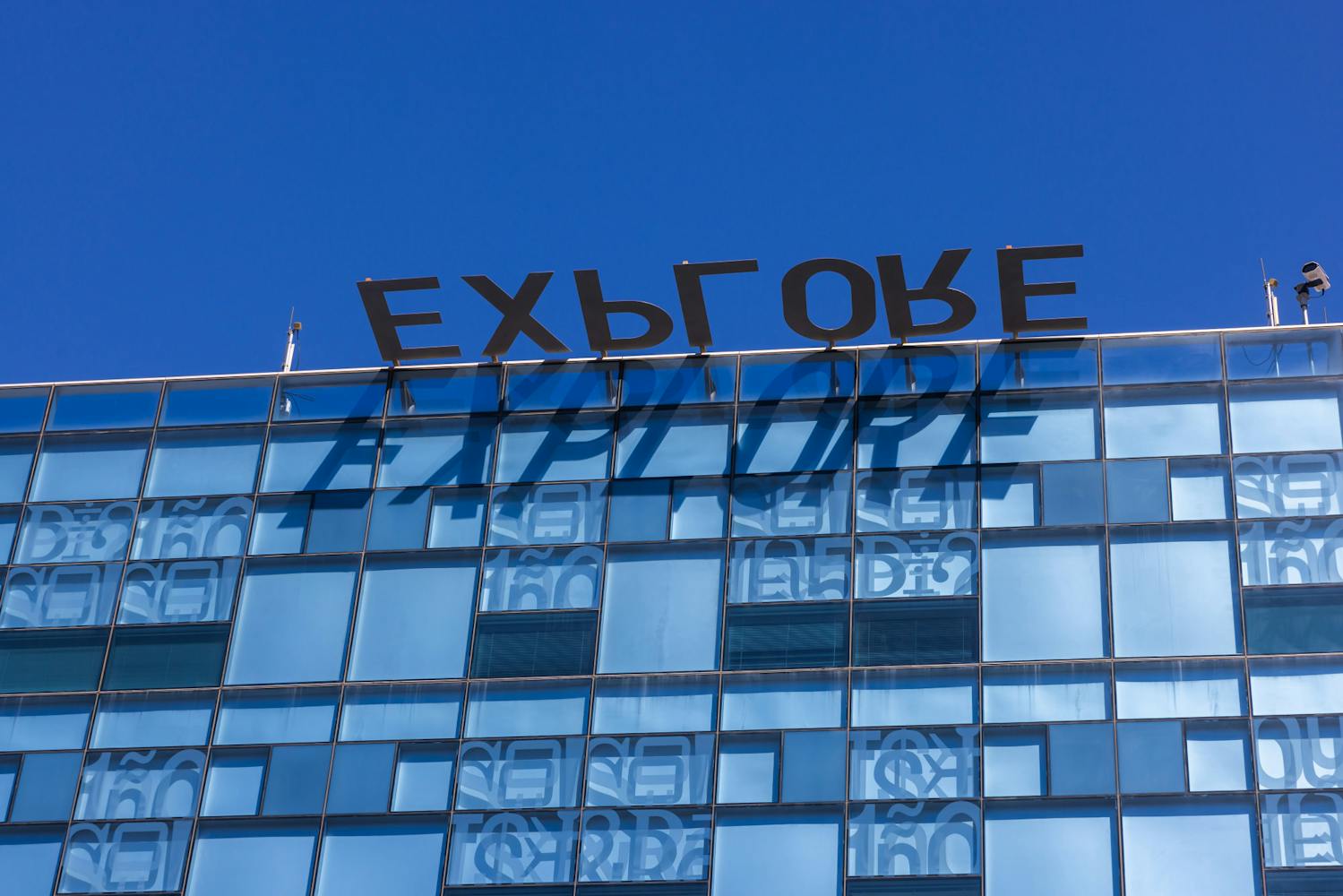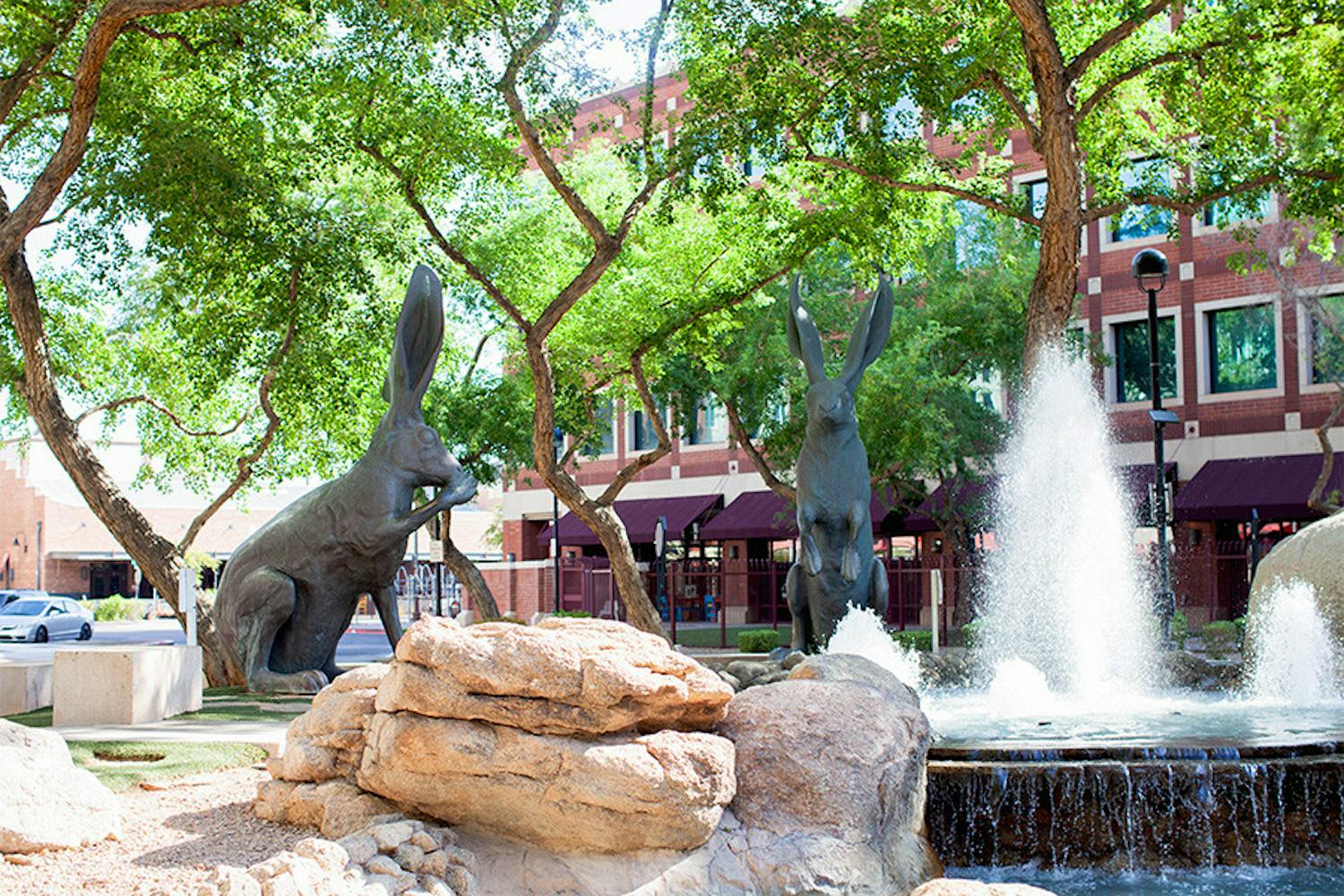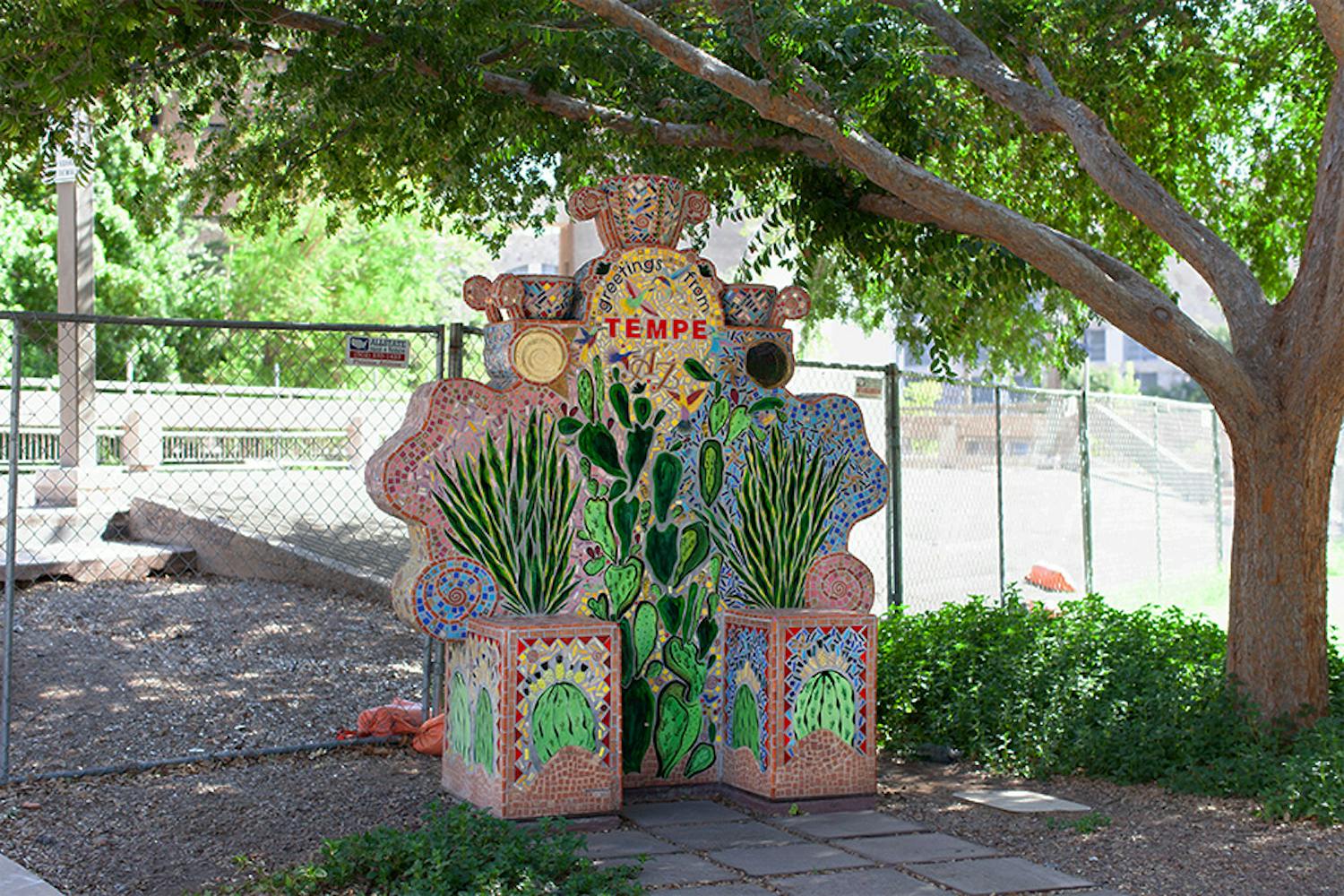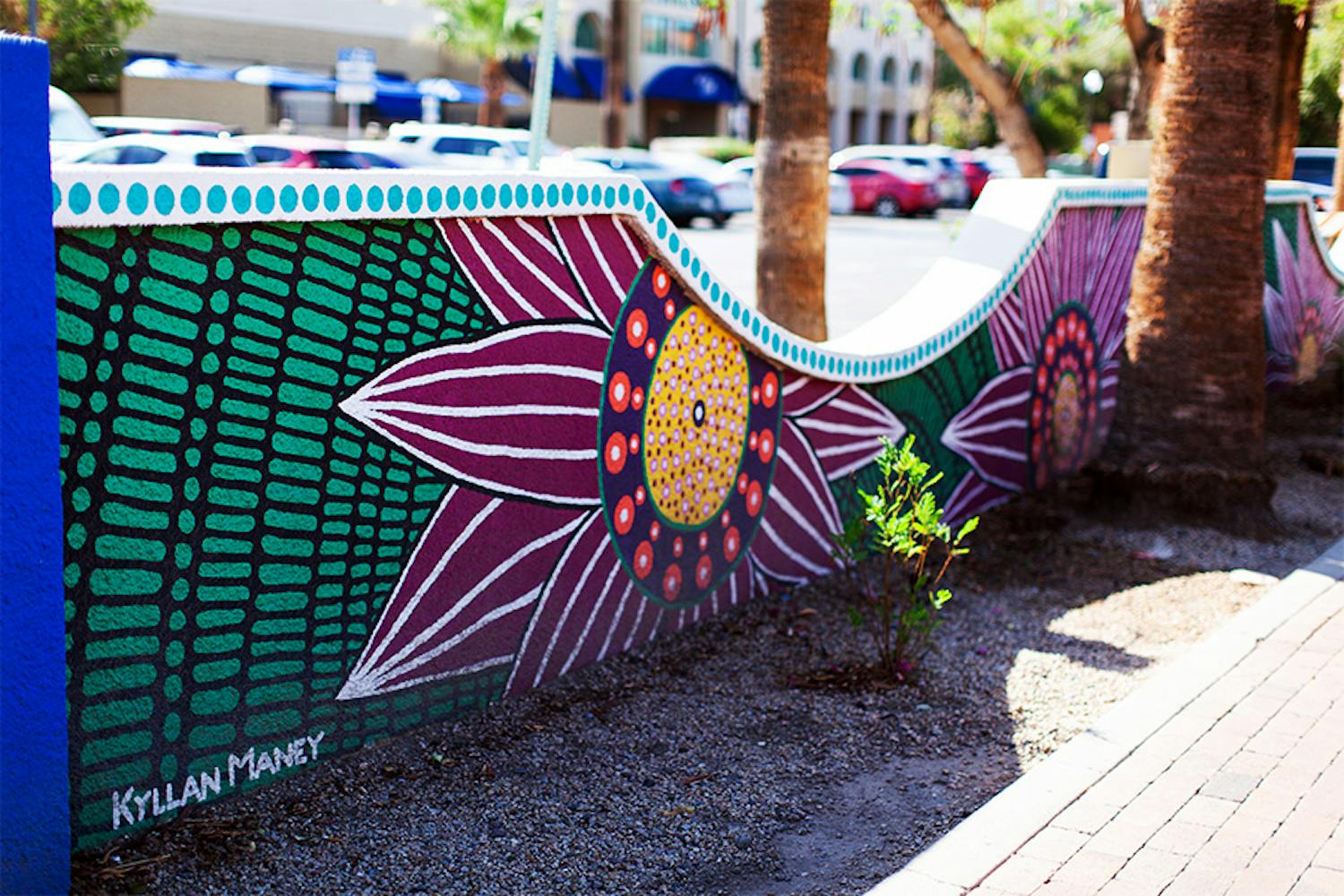Outside, with no payment or car needed, students and community members have access to public murals, sculptures and imaginative architecture on the Tempe campus and in the adjacent Downtown Tempe area.
"Public art is not only this art that beautifies space, but it also creates a sense of unique identity for the people that live there, that visit the artwork," said Tempe Public Art Coordinator Christine Garner-Beatty.
The public art that shapes an area’s identity is often integrated into the common places and infrastructure of the city.
One example of this that Garner-Beatty gave is Valley Metro’s initiative in Tempe to incorporate art into streetcar stops. In Downtown Tempe, utility boxes and bike lockers are reinvented in unique ways by different painters.
Tempe and other cities were not always this welcoming to street art, according to local artist and ASU alumni Kyllan Maney. She recalls a time when officials and Arizonans worried a mural would cause an "area to look poor."
But in the '90s, legislation promoting public art and a blossoming art culture in downtown Phoenix pushed a shift in Arizona's public art scene.
"Before there was a lot of that resistance, and it's just amazing in such a short period of time how that whole mentality has changed so much," Maney said. "Because that's changed, I just think that Tempe is so much of a better place to walk around, bike around, driving around is really cool."
Victor Mendoza, a senior studying art education, said the mix of art in Tempe is a "breath of fresh air."
"As you start going more towards downtown Phoenix and towards Tempe, you see a whole lot of different sculptures, paintings and murals," Mendoza said. "It's really cool, especially for fine artists and even those in graphic design."
Mendoza said he specifically appreciates the presence of Hispanic and Latino art around Arizona, whether in murals or local galleries.
The City of Tempe offers multiple public art maps, including the Tempe Public Art Walking Guide at Tempe Town Lake and the Tempe Public Art Walking Guide at Downtown Tempe. Though ASU’s public art does not belong to the City of Tempe’s collection, the city does have an ASU art map.
Below are just a few of the pieces you can look for as you explore campus on your very own public art walk.
"Southwest Pieta"
Just outside of the ASU Art Museum stands "Southwest Pieta" by Luis Jimenez. This 1987 fiberglass sculpture portrays a man cradling a dead woman based on a mythological Mexican love story. Surrounding the base of the statue are elements such as a cactus, eagle and rattlesnake, which all hold cultural significance.
READ MORE: Frozen in time: Sculptures on campus
Lattie F. Coor Hall façade
A close look at the façade of Lattie F. Coor Hall reveals "letters from several Latin-based, Native American and Asian languages, as well as numbers and punctuation marks, to represent the universal potential of language," according to the ASU Virtual Tour website. The ASU building off of Forest Mall houses classrooms and workspaces for multiple departments. Chicago based artist BJ Krivanek designed the façade, which casts the shadows of characters in the glass onto an interior wall at certain times of the day.
"Three Blacktail Jack Rabbits"
Heading into downtown Tempe, the "Three Blacktail Jackrabbits" by Mark Rossi surround a fountain at the corner of S. Mill Avenue and West 7th Street. Named "Restful Rabbit," "Guard Rabbit" and "Groomer Rabbit," each bronze sculpture weighs between 1,000 and 1,500 pounds and represents the history of the Phoenix Salt River Valley.
"Greetings from Tempe"
Built in 1995, Susan Gamble’s "Greetings from Tempe" is an intricate mosaic of desert images. The artist was inspired to make the piece "like a postcard" of Tempe, Garner-Beatty said. The iconic piece is situated near Tempe City Hall Plaza.
Mission Palms Hotel wall
Running in front of the Mission Palms Hotel, near the base of the ASU landmark A Mountain, is a colorful low wall with cacti and flowers. As visible in the mural, artist Kyllan Maney is often inspired by florals, plants and radial patterns. Citizen First Bank — formerly known as Silicon Valley Bank — funded an extension of the project, painting the previously beige wall as a way to brighten employees' walks to work.
"It's a really interesting-shaped wall, and it already has some interesting movement," Maney said. "So it was a lot of fun to really accent the way that that wall moved."
Maney reflected on the last time she painted an interactive installation on a corner of Mill Ave, colloquially known as "The Chair".
"The last time I painted the chair, I realized that I was standing on a corner that one of my good friends, who's a painter, she has a magazine stand (painted)," Maney said.
Across the street, an artist Maney loved had painted a bike locker. In the shop window there was local photography and art at the post office. "I was like, 'Oh my gosh,' just one little street corner has all of these elements here."
Renate Klein, a senior studying art education, said it is special for ASU students to enjoy public art on campus as well.
"I think that (ASU’s public art) creates more welcoming environments and maybe draws in a lot of creatives," Klein said. "I like that it’s public because anyone can see it. It doesn't really take away from anybody."
Edited by Claire van Doren, Alexis Waiss and Grace Copperthite.
Reach the reporter at spbracci@asu.edu and follow @SophiaBraccio on X.
Like The State Press on Facebook and follow @statepress on X.
Sophia is a sophomore studying journalism and mass communication. This is her third semester with The State Press. She has also worked at Nomads with Notebooks and Blaze Radio.








